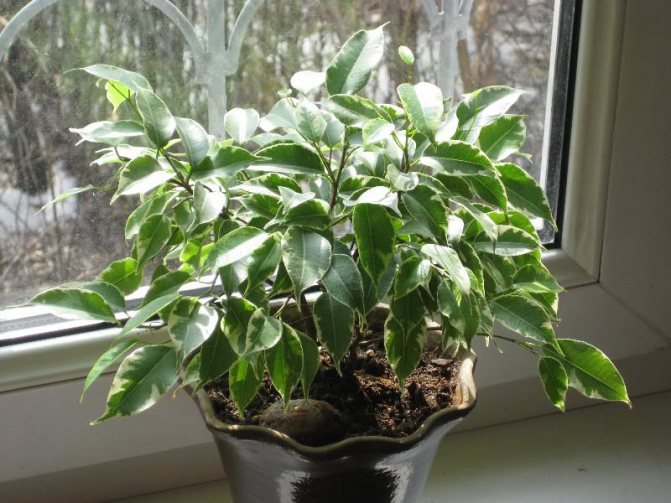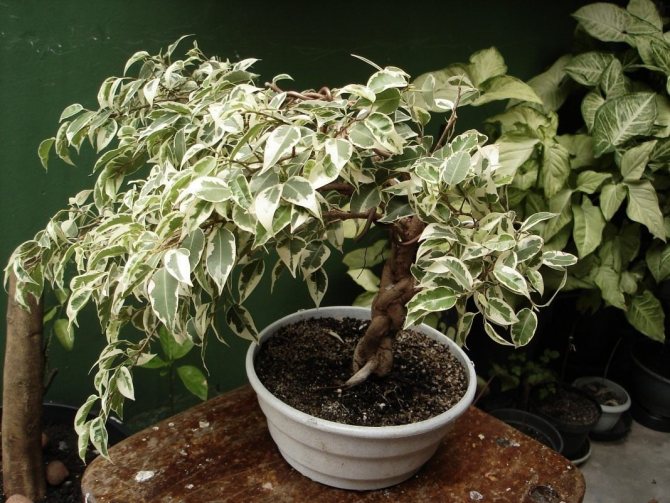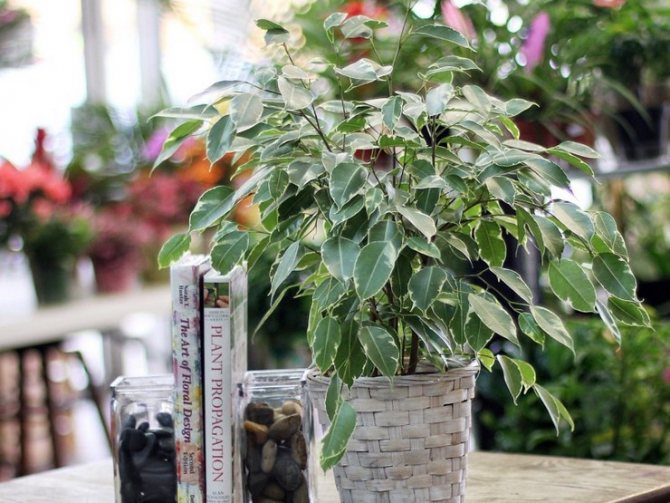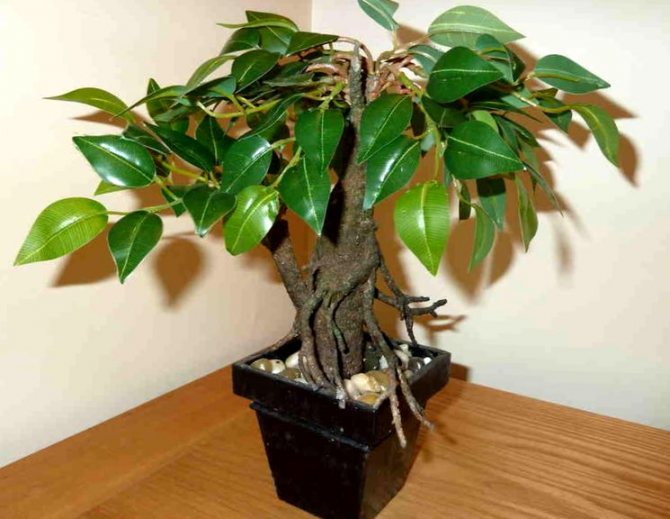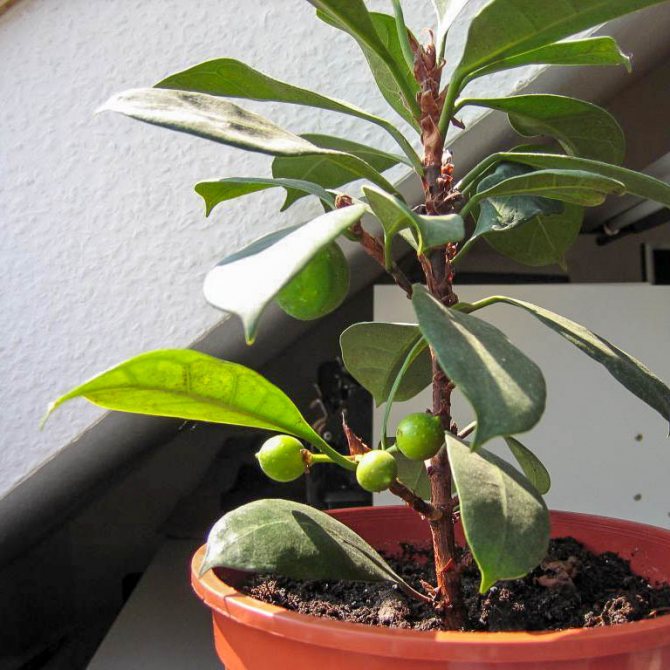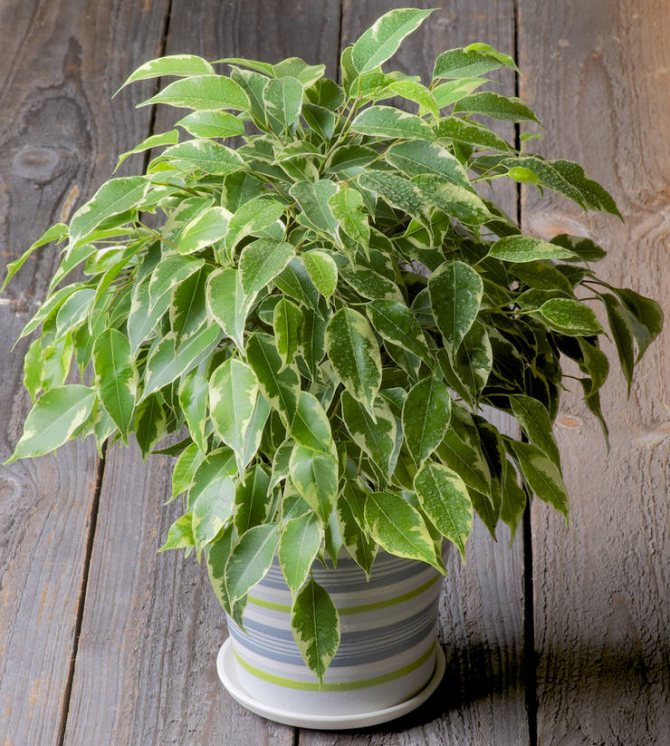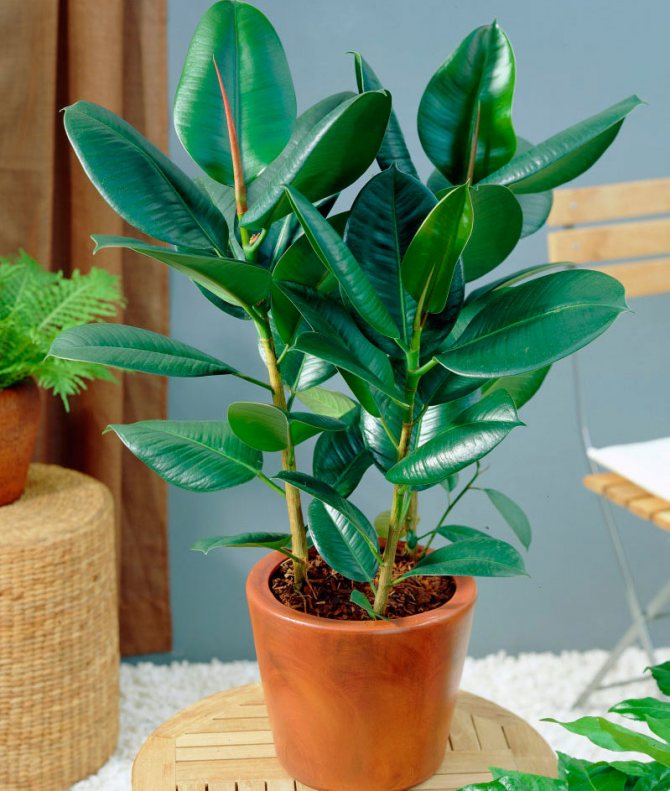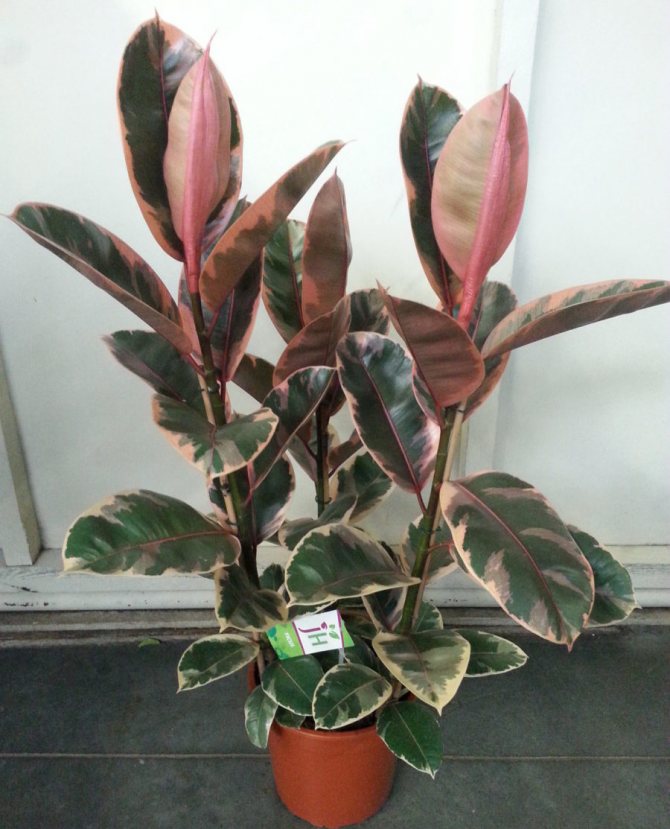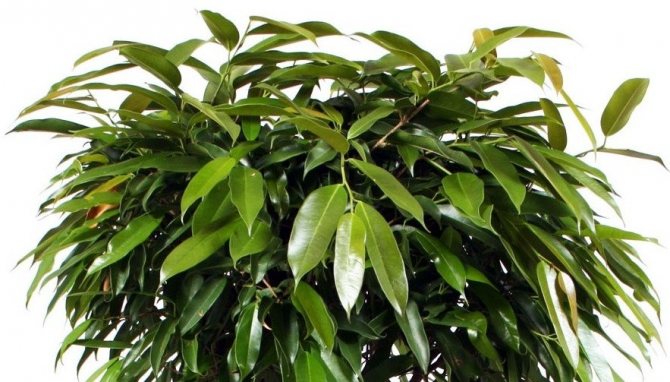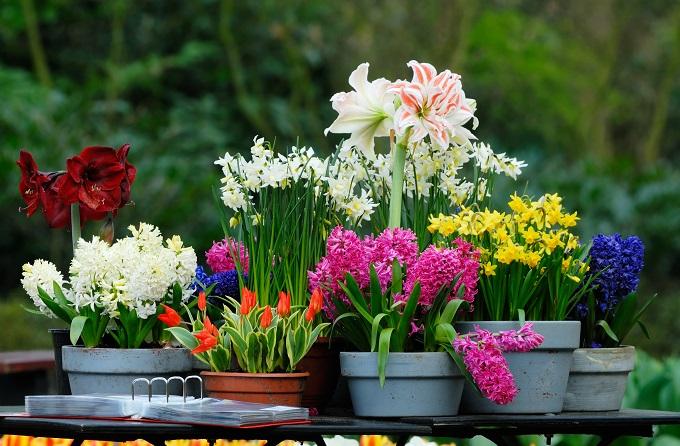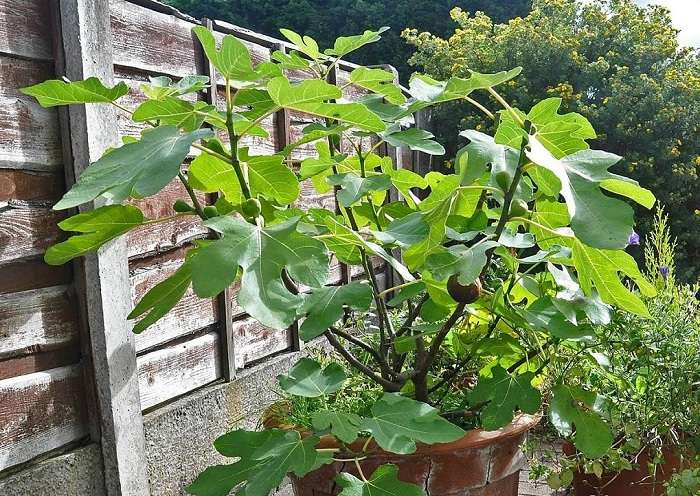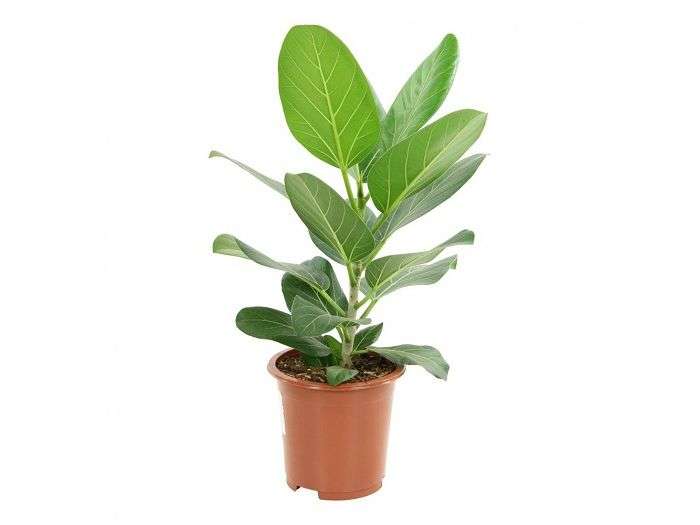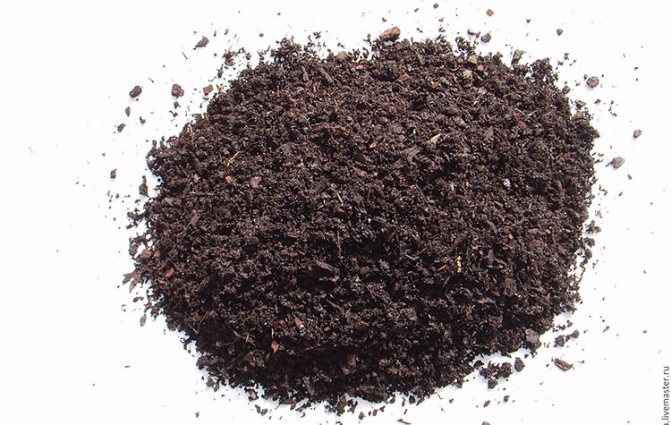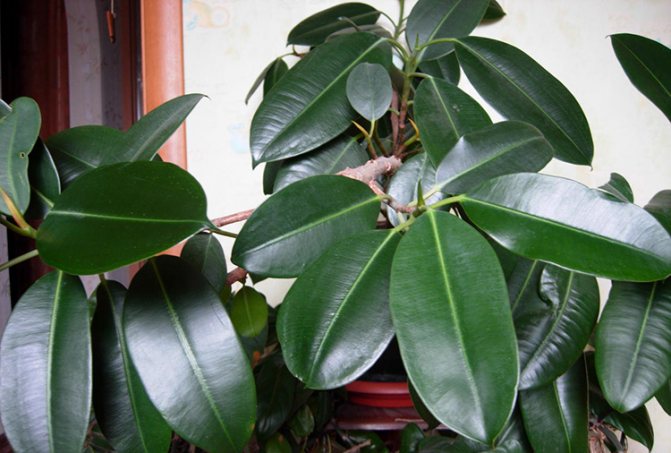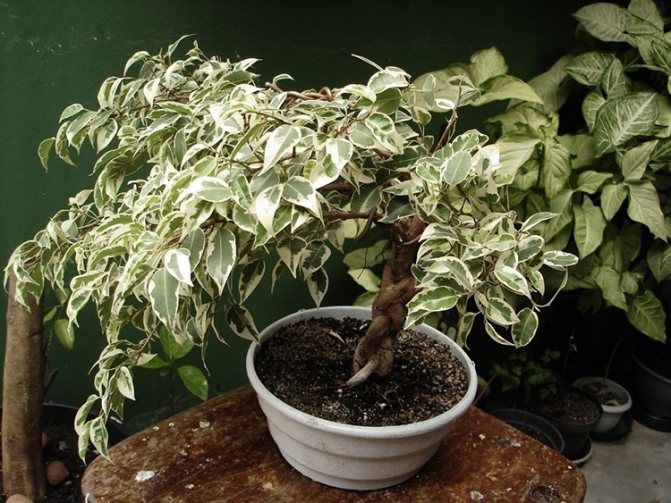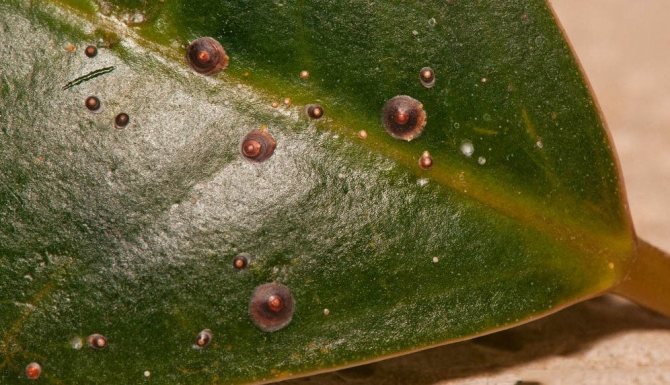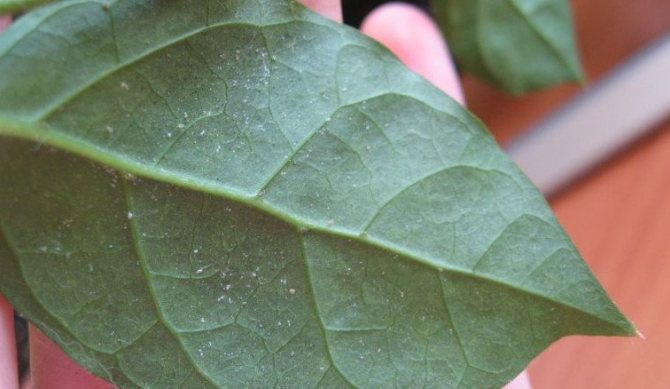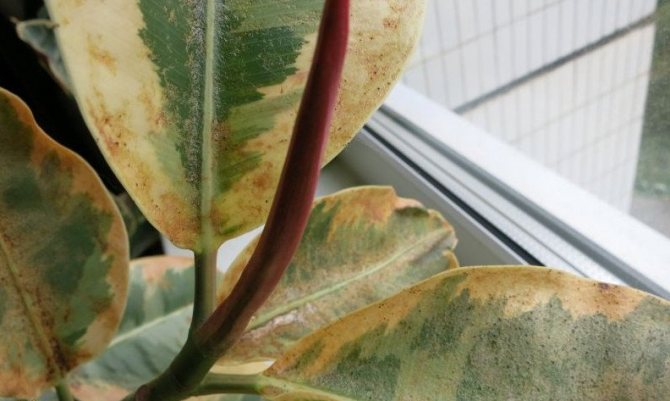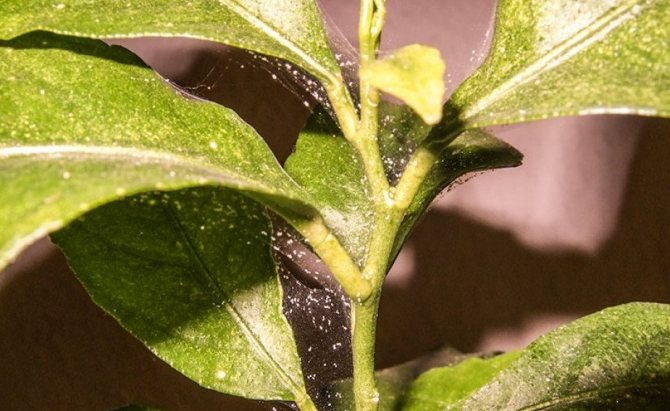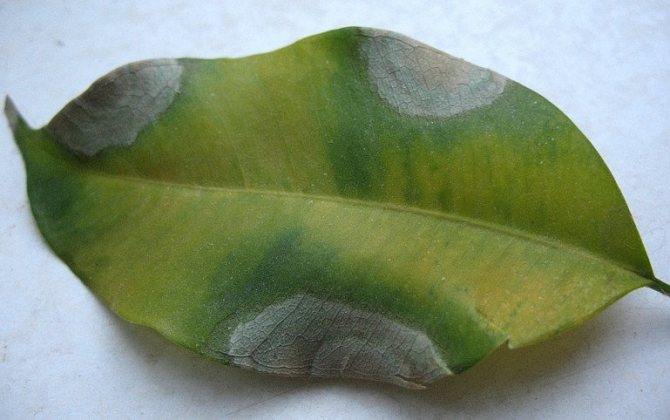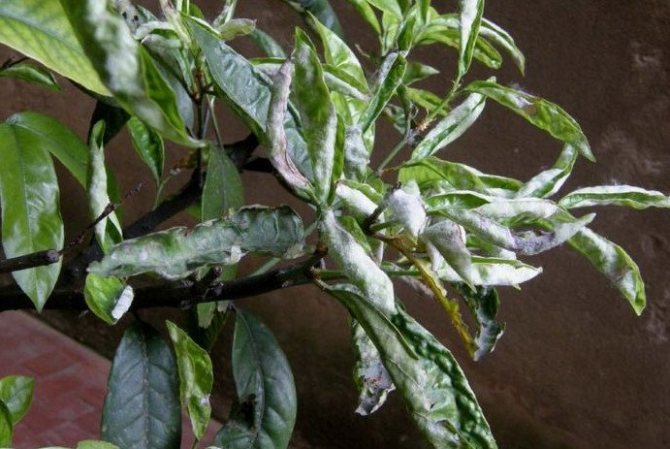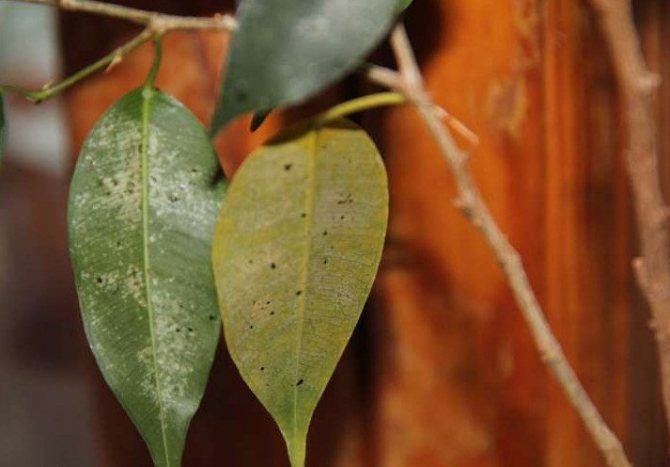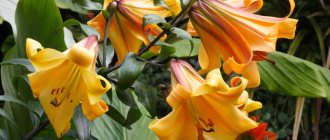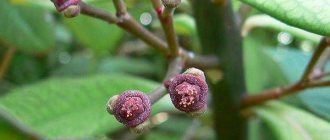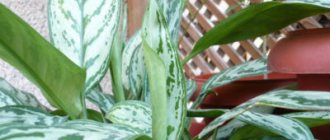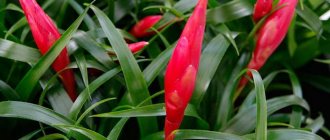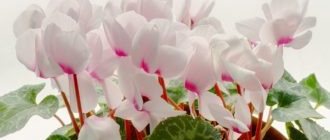Ficus benjamina (Ficus benjamina) is a rather popular houseplant in modern floriculture, a guest from South Asian countries. Some erroneous versions indicate that this type of ficus is named after the person who discovered it. However, it is not.
The most plausible conventional version says that the flower got its name from the noun "benzoy" - a special incense from the island of Java, which was very much appreciated by Europeans in the 18th century. Then they mistakenly believed that benzoin gum was obtained by the Asians just from this plant, which is why they named it that way (in fact, this resin was obtained from plants of the Styrax genus).
Choosing ficus benjamin for yourself, remember that the key time for him is the first three months after transplanting to a new location. If the plant survives this period without serious stress, then it is guaranteed to take root well.
The flower bush grows relatively large (up to 3 meters in height), maintains a neat decorative shape and looks quite presentable in general, even though it blooms infrequently in captivity.
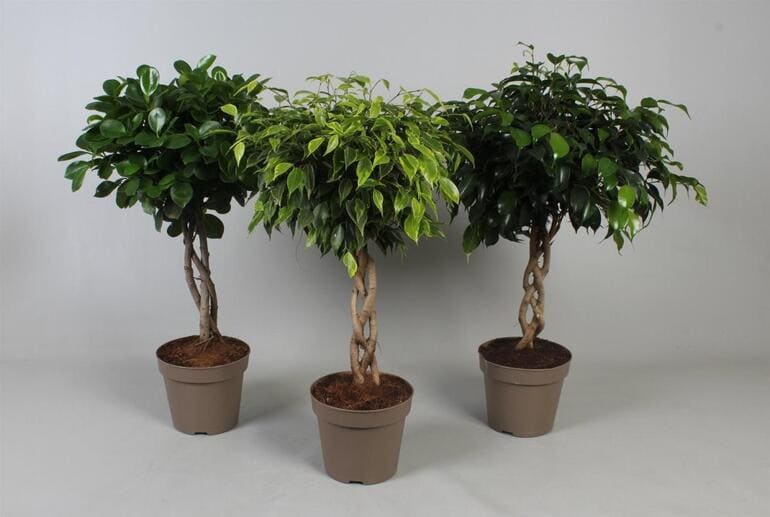
Botanical description
In the wild, benjamin ficus in the early stages of life is a typical epiphyte plant... In other words, it feeds exclusively on precipitation and draws moisture from the air, and uses other trees as a support. Over time, the plant takes root, and its aerial roots become woody.
The plant has a gray woody trunk with well-distinguishable blotches of dark color.
One of the features of growing ficus benjamin lies in the fact that the plant grows very quickly in ideal conditions for itself. Some craftsmen plant 2-3 bushes side by side in one pot, and as they grow, weave the trunks into an elegant pigtail. It turns out an original, but, most importantly, a unique indoor flower.
The plant is densely covered with leaves, most often having a pointed shape. The leaf blades are dense, leathery, sometimes glossy. In size, they rarely exceed 10-12 cm, and most often they grow up to 6-7 cm - no more.
We can say that foliage is the main thing for which this indoor flower was loved in decorative floriculture. The plates can have completely different colors depending on the type: green, light green, gray, dark green, two-colored, etc.
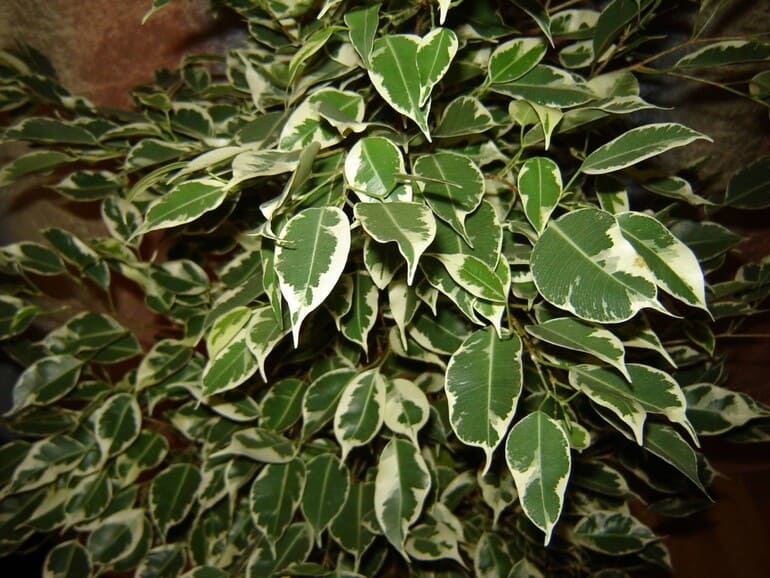

Outdoors, the plant propagates by seed. In indoor floriculture, it is extremely difficult to achieve flowering and fruiting, which is why the flower is propagated by cuttings.
In the wild, the tree can grow up to 25 meters in height, has a spreading crown.
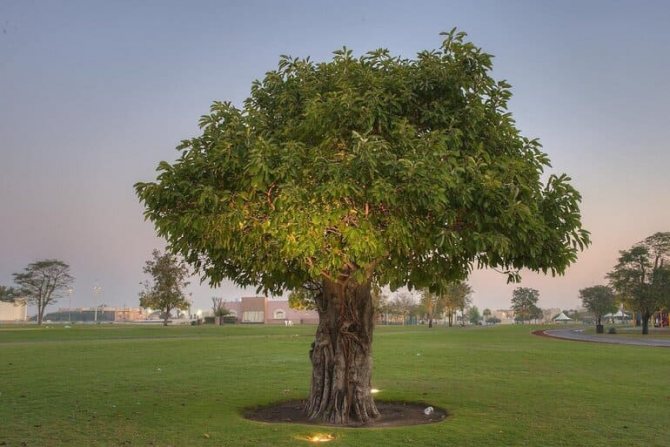

Reproduction
Ficus can be propagated in the following ways:
- By cuttings.
- Air layering.
- Sheet.
The procedure can be carried out in the warm season.
Cuttings
Cutting is carried out in this way:
- The apical shoots with three pairs of leaves are cut off. The length is about 10 cm, the bottom leaves must be removed.
- Prepared soil (earth with sand or peat with perlite) is poured into the pot.
- Cuttings are planted in pots.
- Are covered with a greenhouse.
- After one and a half to two weeks, the roots will appear and the plant can be planted in small pots.
Ficus species with green leaves take root faster than variegated ones. Rooting is best at a temperature of about 25 degrees. Rooting of cuttings can also be carried out in water.
Below is a useful video with a detailed description of the grafting process:
Air layering
The method of propagation of ficus by air layers can be used if its stem is very bare at the base.
What should be done:
- Choose a straight and long shoot, excess leaves can be removed.
- With a sharp knife, make two cuts on the shoot at a distance of 3 cm from each other.
- Clean the bark between the cuts and dust the surface with Kornevin.
- Wrap the slice in sphagnum.
- Cover the moss with foil and tie tightly on both sides.
Important! The moss should always be moist. - After a while, roots will appear, the shoot needs to be cut under them and the plant should be planted in a pot.
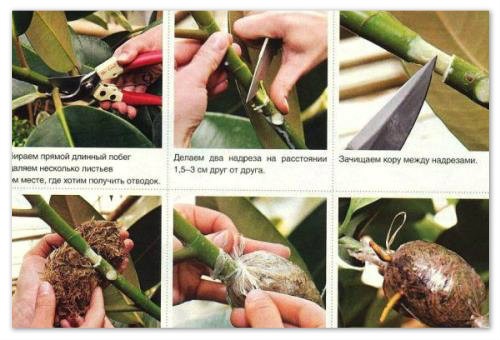

Read everything about the reproduction of ficus at home in this material.
Plant structure
Roots
An adult plant has a powerful root system that can extend to a depth of 25 meters. Indoors, ficus rarely exceeds 2-2.5 m in height, and its root system is not so strong. However, the plant tries to occupy the entire volume of the pot allocated for it. For this reason, the flower is transplanted every year.
The root system grows as fast as aerial shoots. Over time, the plant takes root even above the surface of the soil in order to consume even more moisture than is present in the soil.
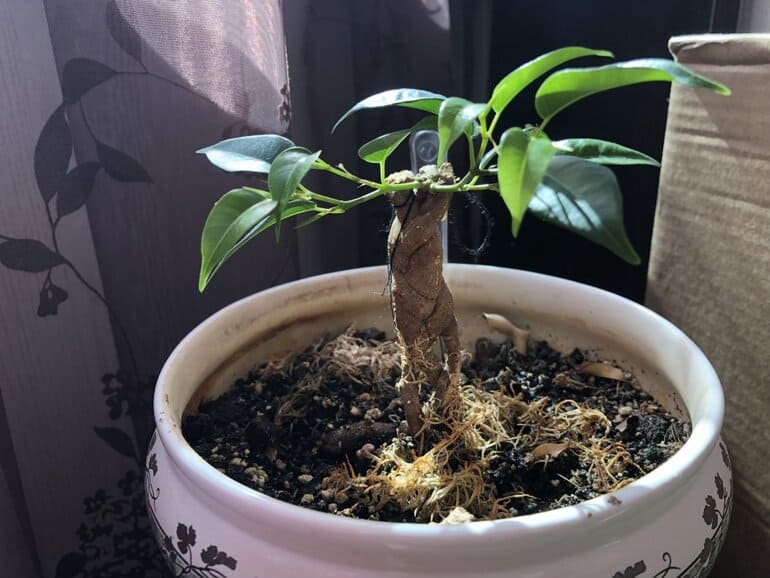

Leaves
The leaves are small oval plates with a pointed tip. Rarely grow more than 10-12 cm in length and 5-6 cm in width. In its natural habitat, the benjamin ficus is distinguished by green or light green foliage. To date, a huge number of hybrids with gray, white, two-color or dark leaf blades have been bred for indoor cultivation.
Ficus Benjamin drops leaves, what to do?
On a round stem, the leaves are arranged alternately, the petiole is barely noticeable, rarely exceeds 2 cm in length. Up to 12 veins are noticeable on each leaf, but the central one is practically invisible to the eye.
Shoots of the trunk and branches are erect, creeping. This ability to take on given forms is used by many gardeners, creating compositions from bushes intertwined together.
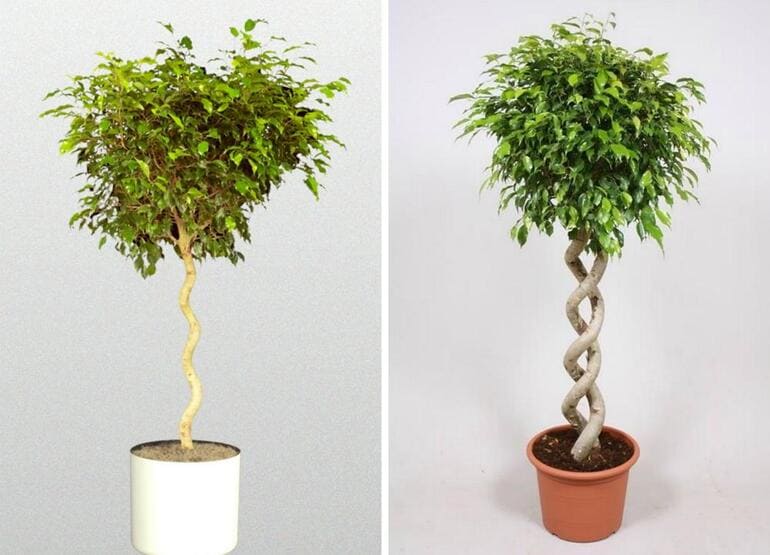

Flowers
Since the flowering of ficus benjamin is an extraordinary phenomenon (we are talking, of course, about growing indoors), few people managed to see the flowers.
In the wild, the inflorescences of this plant generally bear little resemblance to the classical concept of flowers. They are siconias - these are modified brushes of inflorescences, which rather resemble small peas.
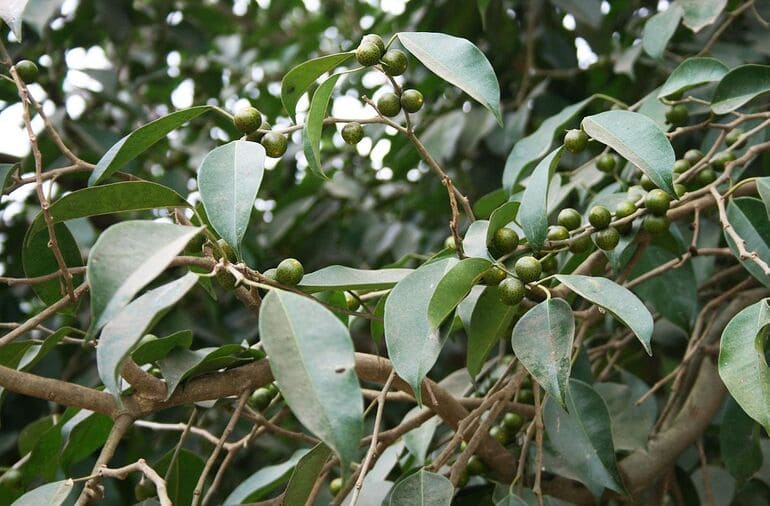

It is known that ficus spends a lot of energy for flowering. Therefore, if, nevertheless, a flower in a room or a greenhouse managed to bloom, but the plant itself looks weak and painful, you will have to cut off the syconia so as not to deplete the already minimal accumulated resources.
Fruit
Ficus fruits are also called syconia. After fertilization of the flower, they turn into a round or oval box in which the seeds ripen. Most often they are colored red or orange, they are not eaten by humans. They grow on the tree in the places of inflorescences, rarely exceed 2 cm in diameter.
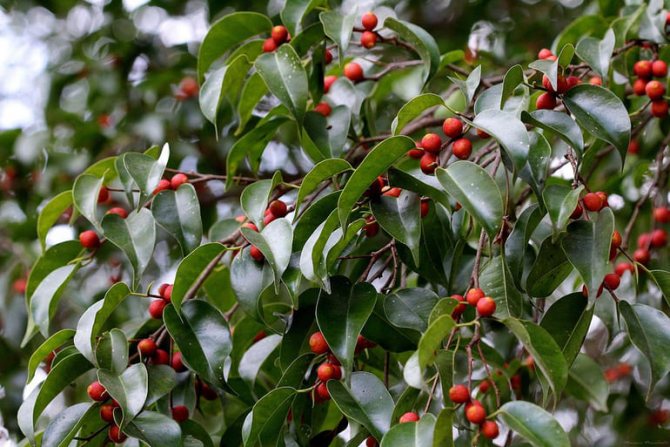

Using
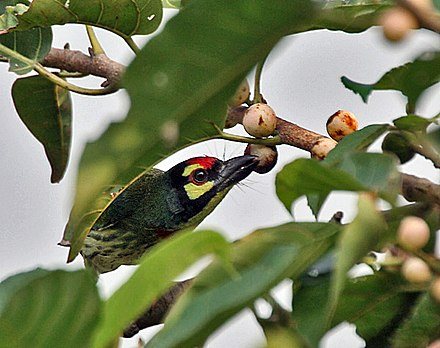

Fruit-eating barbart Ficus virens
Many types of ficuses are useful plants.
They are of the greatest importance industrially as giving rubber: Ficus elastica
(Sumatra),
Ficus nymphaeifolia
,
Ficus populnea
,
Ficus radula
,
Ficus sylvestris
(Brazil),
Ficus elliptica
and
Ficus prinoiddes
(Colombia, Ecuador).
The fruits of some representatives of the genus (Ficus carica
,
Ficus sycomorus
,
Ficus religiosa
,
Ficus rumphii
,
Ficus bengalensis
) are edible, contain up to 75% sugars (glucose, fructose); these plants entered the culture in time immemorial.
In rain forests, ficus fruits are the main part of food for mammals and birds, leaves and wood are insects.
In Mexico, Central Africa, roofs and sheds are made from leaves.
Sheet Ficus carica
used as a medicinal raw material -
Folium Ficusi caricae
... Harvested after removing the fruits in September - October and dried, using to obtain the drug "Psoberan".The active ingredients are coumarins, the main ones being psoralen and bergapten. Psoberan is used to treat alopecia areata and vitiligo. Fig fruits are used as a mild laxative (syrup) for coughing, and are also part of the drug "Kafiol" [5].
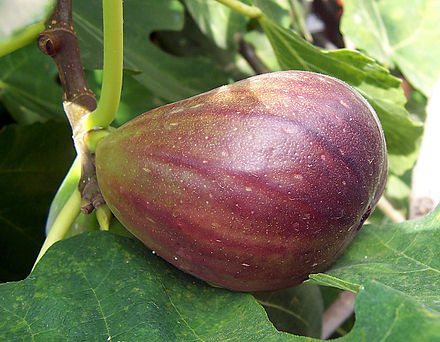

Fig tree fruit
Some types (Ficus laccifera
,
Ficus religiosa
,
Ficus bengalensis
) deliver shellac, or gummilac (gum, resulting from the bites of the varnishbug).
The fig tree is one of the two sacred trees among the Muslims; revered also by Hindus and Buddhists.
The peoples of the Indian state of Meghalaya, several centuries ago, learned to use the roots of the rubbery ficus to grow living bridges. To do this, bamboo poles are thrown over the obstacle and the roots are directed onto them, which gradually grow to the opposite side [6], the process of "construction" lasts 10-15 years. Living bridges can be up to 30 meters long and can support the weight of more than 50 people [7]. The cultivation of such bridges is more practical than the construction of wooden ones, since more than 11,000 mm of precipitation falls there per year and dead wood quickly decays. Some bridges are up to 500 years old [6] [8].
In terms of growth characteristics, most ficuses are erect, single-stemmed woody plants, suitable for landscaping interiors as tapeworm plants or components of phytocompositions (structural or accent species) [9].
Homeland of ficus benjamin
Historically, Benjamin's ficus belongs to the territories of Southeast Asia, where it was and is today a typical representative of tropical rainforests. In the most ideal conditions for itself, the plant can grow up to 20-25 meters and, taking into account the spreading crown, occupy an area of several hundred square meters. Such representatives of ficuses can be found in the north of Australia and in the southern regions of China, Thailand, Indonesia.
It is interesting: ficus benjamin (or another version of the popular pronunciation - benjamin) is considered one of the most famous symbols of the capital of Thailand - Bangkok.
Subgenera and species
Subgenera:
- Ficus
- Synoecia
- Sycidium
- Sycomorus
- Pharmacosycea
- Urostigma
Views
Main article: Species of the genus Ficus
According to database information The plant list
(2013), the genus includes 841 species [10]. Some of them:
- Ficus altissima
- Ficus americana
- Ficus aurea
- Ficus benghalensis - Bengal ficus
- Ficus benjamina - Ficus Benjamina
- Ficus broadwayi
- Ficus carica - Fig, or Fig tree
- Ficus citrifolia
- Ficus drupacea
- Ficus elastica - Ficus rubbery
- Ficus godeffroyi
- Ficus grenadensis
- Ficus hartii
- Ficus insipida - Amate
- Ficus lyrata
- Ficus macbrideii
- Ficus macrophylla
- Ficus microcarpa
- Ficus nota
- Ficus obtusifolia
- Ficus palmata
- Ficus prolixa
- Ficus pumila - Dwarf ficus
- Ficus racemosa - Ficus racemose
- Ficus religiosa - Sacred ficus
- Ficus rubiginosa
- Ficus stahlii
- Ficus sycomorus - Sycamore
- Ficus thonningii
- Ficus tinctoria
- Ficus tobagensis
- Ficus triangularis
- Ficus trigonata
- Ficus ulmifolia
- Ficus altissima
- Fruit Ficus aspera
- Ficus deltoidea
- Ficus erecta
- Ficus lutea
- Ficus mauritiana
- Ficus pseudopalma
- Ficus variegata
in hong kong
Flower varieties
Ficus benjamin has several bred varieties, each of which has some unique features. But in all cases, the flower remains surprisingly beautiful, almost an ideal option for decorative landscaping.
An entertaining fact. On the island of Sri Lanka in the Royal Botanic Gardens, the oldest known ficus, benjamin, grows. Its age is estimated at 150 years. It is also called a turtle because of the obvious resemblance of the crown of a plant to the shell of an animal. The crown area is an incredible 2,500 m2.
Some particularly popular varieties can be distinguished.
Exotic
The most unpretentious variety. It is recommended to start acquaintance with Benjamin's ficus with it. Externally, the flower is a classic version of the ficus.
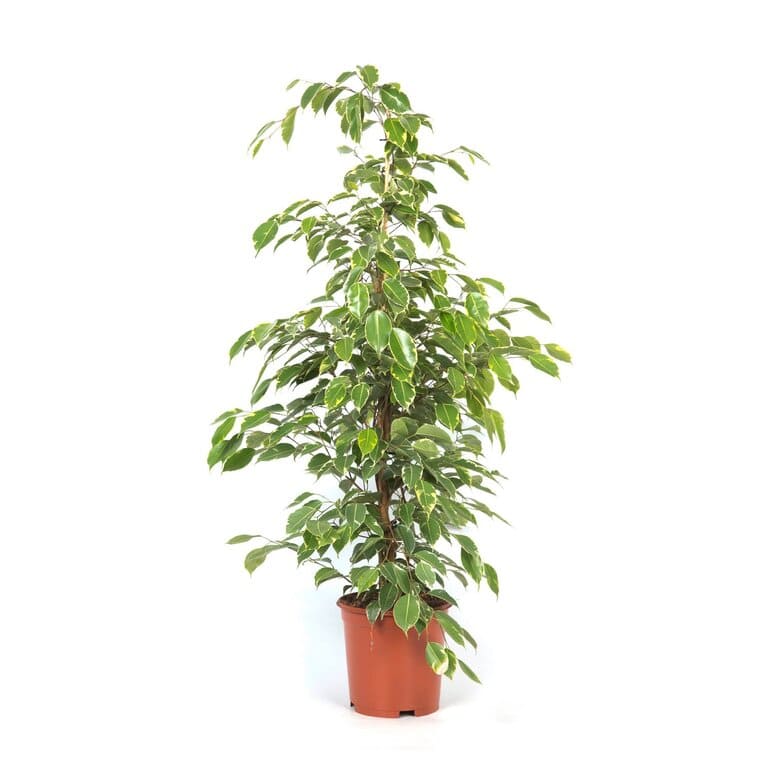

Monique
One of the most original indoor flower options. The main unique feature is the two-colored leaves. But it is difficult to care for the variety.
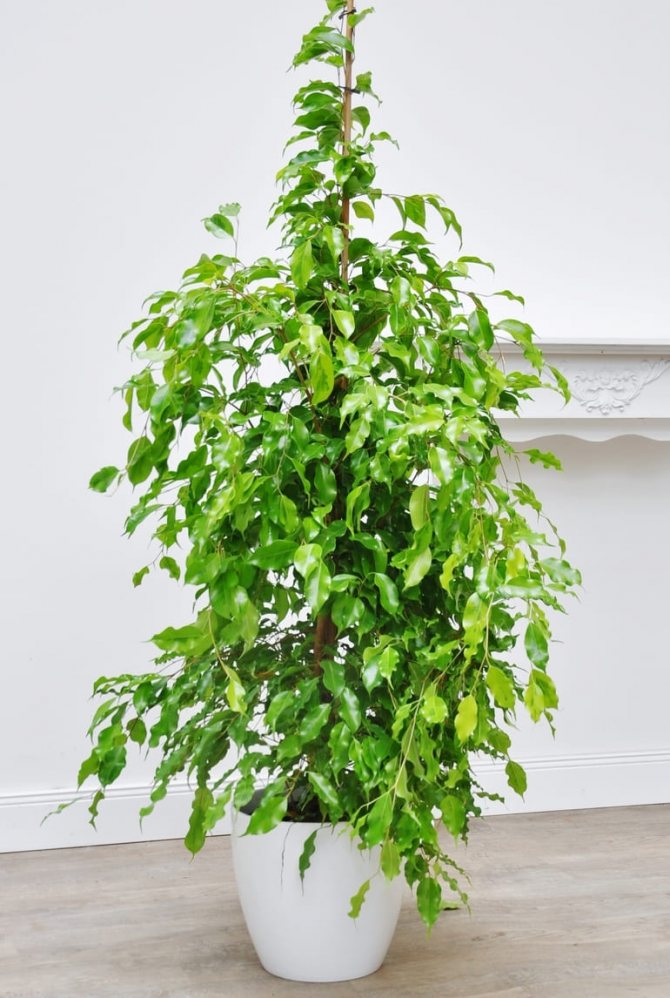

Baroque
A rare specimen with wavy, often two-colored leaves. To leave is also very whimsical.
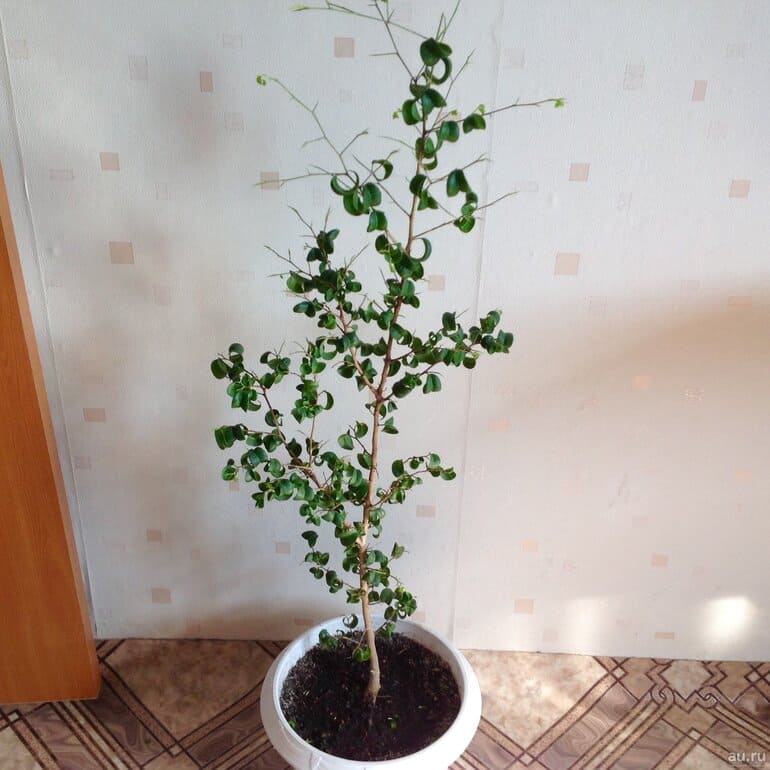

Plant care
The most important two aspects that are important to observe in caring for the benjamin ficus are maintaining high humidity and optimally high temperature.
For the warm season, ficus grows best at temperatures from + 18Co and above. Some varieties like the heat even more than 25Co. In winter, it is important not to allow air cooling below + 16Со.
Direct sunlight can harm the ficus only if the plant is placed on the south side, where the sun is most during the day. But the east or west side is an ideal accommodation option.
You need to water the flower often, but always carefully monitor the condition of the soil. The most accurate time for the next watering is if the soil is dry 3-5 cm deep. On the other hand, spraying ficus leaves every day may be required in summer. To increase the humidity next to the flower, you can install a container with expanded clay and periodically add water there.
The soil for ficus needs fertile and slightly acidic. The plant is transplanted for the first 7-10 years every year.
During the period of active growth (in spring), it is highly recommended to feed Benjamin's ficus with organic or mineral fertilizers (you can alternate). The best regimen is once every 2 weeks.
More about caring for Benjamin's ficus

